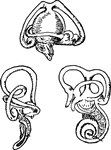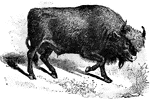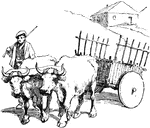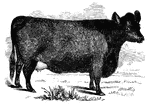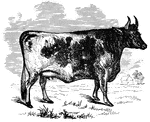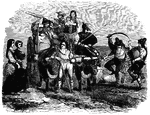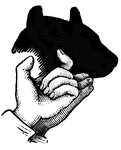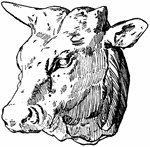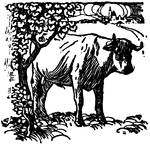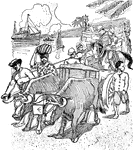Clipart tagged: ‘Ox’
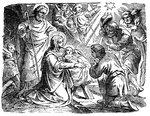
The Adoration of the Shepherds at the Birth of Jesus
"And it came to pass, when the angels went away from them into heaven, the shepherds said one to another,…
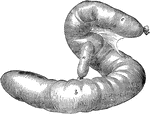
Caecum of an Ox
Caecum and origin of colon of an ox- inflated. Labels: a, terminal portion of the ileum; b, caecum;…
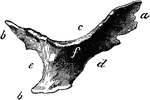
Cardiac Bone of an Ox
Right cardiac bone of an ox. Labels: a, anterior angle; b, posterior angles; c, superior border; d,…

Egyptian Cattle Doctors
"Cattle doctors are exhibited performing operations upon sick oxen, bulls, deer, goats, and even geese."…
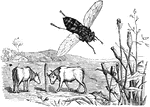
Ox Fly
"The Ox-fly, Oestrus bovis, is three-forths of an inch long, and lays its eggs in the skin of young…

Compressed Foot
An extreme form of a compressed foot, typically seen in the deer and ox. It is useful for land transit.

Giant with the Head of an Ox
A symbolical figure representing a giant having the head of an ox and wielding a club.
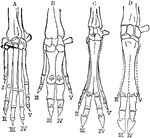
Hands of Vertebrates
A comparison of vertebrate hands. A, hand or anterior foot of the dog; B, that of the hog; C, that of…

Human Leg (Front View), and Comparative Diagrams showing Modifications of the Leg
This illustration shows a human leg (front view), and comparative diagrams showing modifications of…
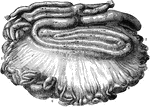
Intestines of an Ox
Mesentery and intestines of an ox. Labels: 1, duodenum; 2, small intestines; 3, caecum; 4, colon; 5,…

Leg of Ox
This illustration shows the leg of an Ox. P. Pelvis, FE. Femur, TI. Tibia, FI. Fibula, TA. Tarsus, MT.…

Liver of an Ox
Posterior view of the liver of an ox. Labels: a, left lobe; b, right lobe; c, spigelian lobe; d, quadrate…
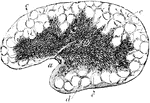
Mesenteric Gland
Section of a mesenteric gland from the ox. Labels: a, Hilus; b, medullary substance; c, cortical substance…
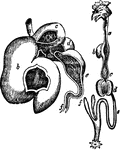
Ox Stomach
"Compound stomach of ox. a, esophagus; b, rumen, or paunch; c, reticulum, or second stomach; d, omasum,…
Plowing in the Middle Ages
A scene from the Middle Ages, in which two people are plowing their land. One drives the oxen with a…
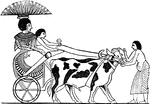
Ethiopian Princess
"An Ethiopian princess on her journey through Upper Egypt to Thebes. The chariot is drawn by oxen, a…

Riddle Seal
The riddle in this "Riddle-seal of Oxford" is an 'ox' crossing a 'ford.' "A seal which contains a rebus,…
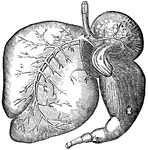
Stomach of an Ox
Ruminants (those animals that chew the cud), as the ox, have a stomach with four cavities. Labels: 1,…
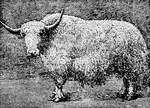
Yak
"Yak is a species of ox from the mountainous regions of Tibet. There are two races: the wild yak, generally…
